- Home›
- Healthy Living›
- International Yoga Day 2023: 7 Yoga Asanas To Keep Your Lungs Healthy
International Yoga Day 2023: 7 Yoga Asanas To Keep Your Lungs Healthy
By: Priyanka Maheshwari Mon, 19 June 2023 10:09:31
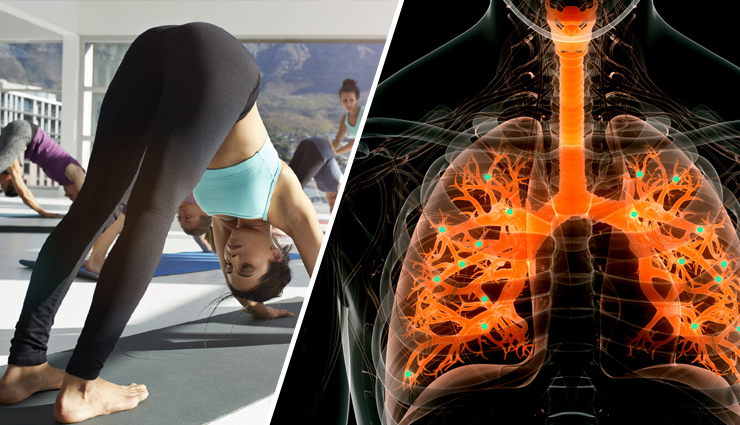
Every year on June 21st, International Yoga Day is observed to promote awareness about the multiple advantages of yoga practise. Yoga offers a holistic approach to health and well-being, and one of its significant advantages is promoting respiratory health. On International Yoga Day 2023, let's prioritize the health of our lungs by incorporating these 7 yoga asanas into our practice. Regularly practicing these poses can improve lung capacity, enhance respiratory function, and promote overall well-being. Remember to listen to your body, breathe deeply, and approach your practice with mindfulness and awareness. Embrace the gift of yoga to nurture and support your lungs, allowing you to experience the fullness of life with vitality and ease.
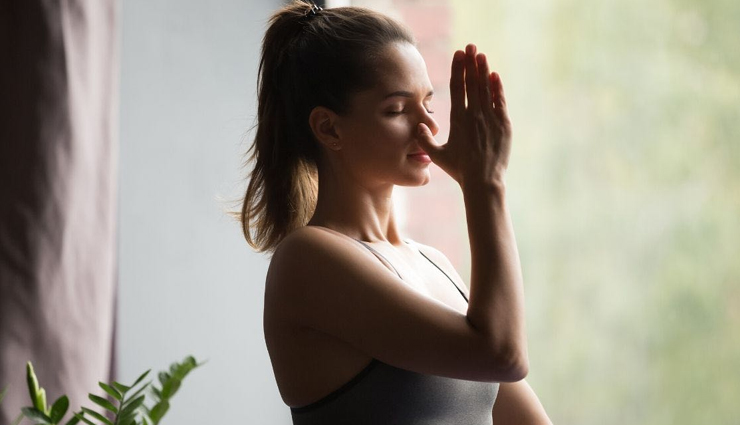
# Anulom Vilom Pranayama (Alternate Nostril Breathing)
Anulom Vilom Pranayama is a powerful breathing technique that cleanses the respiratory system, improves lung capacity, and promotes balanced oxygenation. By alternating the breath through each nostril, it balances the energy channels and enhances lung function.
Steps to Practice Anulom Vilom Pranayama (Alternate Nostril Breathing):
- Find a comfortable seated position on a yoga mat or a chair, with your spine erect and shoulders relaxed.
- Close your eyes and take a few deep breaths to relax your body and mind.
- Place your left hand on your left knee, palm facing upward, in a gesture of grounding and receptivity.
- With your right hand, bring your index and middle fingers to your forehead, gently closing your right nostril with your right thumb.
- Inhale deeply through your left nostril to the count of four.
- Close your left nostril with your ring finger, releasing your right thumb from the right nostril.
- Exhale slowly and completely through your right nostril to the count of eight.
- Inhale through your right nostril to the count of four.
- Close your right nostril with your right thumb.
- Exhale slowly and completely through your left nostril to the count of eight.
- This completes one round. Continue for 5-10 rounds, gradually increasing the duration as you become more comfortable.
Precautions:
- Practice Anulom Vilom Pranayama on an empty stomach or at least 2-3 hours after a meal.
- If you feel dizzy or lightheaded during the practice, stop and resume normal breathing. Consult a qualified yoga instructor if you have any concerns or pre-existing health conditions.
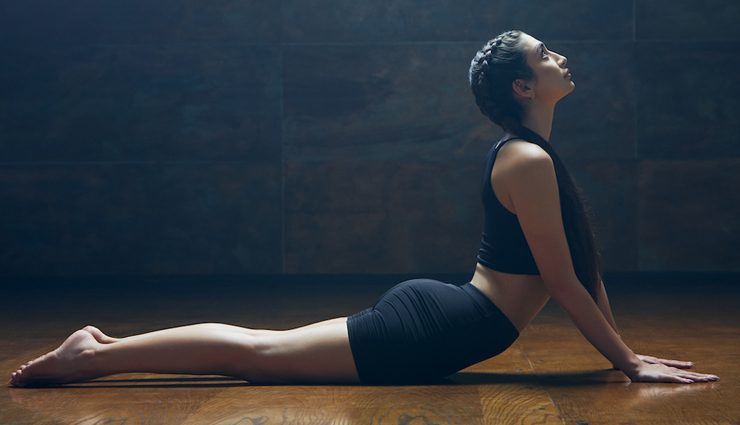
# Bhujangasana (Cobra Pose)
Bhujangasana stretches the chest, opens the lungs, and improves breathing capacity. It strengthens the spine and back muscles while gently massaging the organs in the abdominal region, facilitating proper oxygen exchange.
Steps to Practice Bhujangasana (Cobra Pose):
- Start by lying flat on your stomach on a yoga mat, with your legs extended and the tops of your feet touching the ground.
- Place your hands on the mat beside your shoulders, palms facing downward, and elbows bent, tucked close to your sides.
- Inhale slowly and press your hands into the mat, lifting your upper body off the ground. Keep your pubic bone grounded and engage your core muscles.
- Straighten your arms while keeping a slight bend in your elbows, lifting your chest and upper back as high as comfortable.
- Gently tilt your head backward, lengthening the back of your neck, and direct your gaze upward or forward, without straining your neck.
- Maintain the pose for 15-30 seconds, breathing deeply and evenly.
- Exhale and slowly release the pose, lowering your chest and upper body back to the ground.
- Repeat the pose for 3-5 rounds, gradually increasing the duration as you become more comfortable.
Precautions:
- Avoid practicing Bhujangasana if you are pregnant or have recently undergone abdominal surgery.
- Individuals with herniated discs, back injuries, or carpal tunnel syndrome should approach this pose with caution or seek guidance from a qualified yoga instructor.
- If you experience any pain or discomfort during the pose, gently come out of it and consult a healthcare professional or yoga instructor.
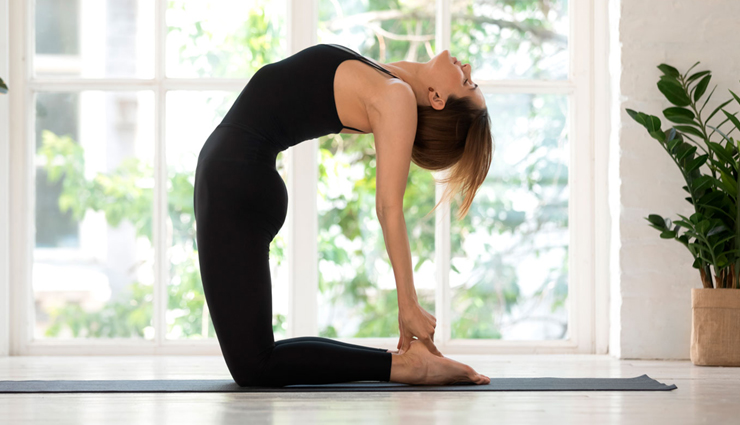
# Ustrasana (Camel Pose)
Ustrasana expands the chest and ribcage, increasing lung capacity and improving breathing efficiency. This pose also stretches the front of the body, relieving tension in the respiratory muscles and promoting deep inhalation and exhalation.
Steps to Practice Ustrasana (Camel Pose):
- Begin by kneeling on your yoga mat with your knees hip-width apart. Keep your thighs perpendicular to the mat, and place your hands on your hips.
- Inhale deeply and elongate your spine, drawing your tailbone down towards the ground.
- Exhale and engage your core muscles. Start to lean back, gently lowering your hands towards your heels.
- As you continue to lean back, keep your hips aligned over your knees and maintain a lengthened spine.
- If comfortable, reach your right hand back to hold your right heel or ankle. Extend your left hand back and hold your left heel or ankle.
- Keep your neck in a neutral position or gently drop your head back, being mindful of your neck's comfort.
- Hold the pose for 30-60 seconds, breathing deeply and maintaining a steady and relaxed breath.
- To release, slowly bring your hands back to your hips, engage your core, and come back to an upright kneeling position.
Precautions:
- Avoid practicing Ustrasana if you have any recent or chronic neck or back injuries. If you have any concerns, consult a qualified yoga instructor or healthcare professional.
- Modify the pose by placing your hands on your lower back or on blocks if you have limited flexibility.
- Listen to your body and practice within your range of comfort. Do not strain or force yourself into the pose.
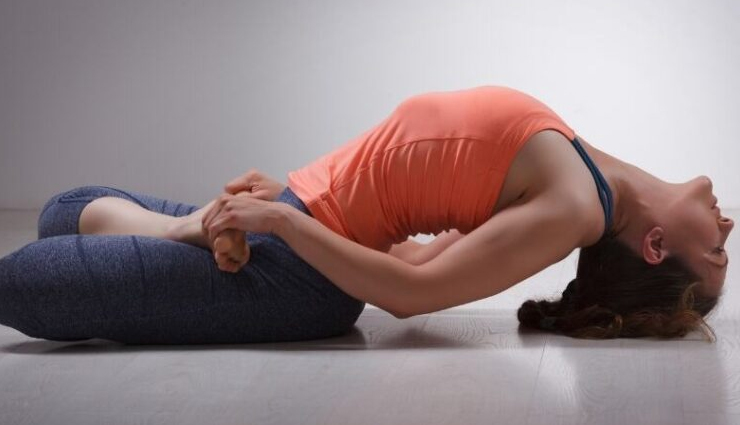
# Matsyasana (Fish Pose)
Matsyasana opens the chest, stretches the intercostal muscles, and expands the lungs. It enhances lung capacity, stimulates the respiratory system, and encourages deep, diaphragmatic breathing.
Steps to Practice Matsyasana (Fish Pose)
- Begin by lying flat on your back on a yoga mat, with your legs extended and arms resting alongside your body.
- Place your palms underneath your hips, keeping your elbows close to your body and forearms pressing into the mat.
- Inhale deeply and engage your core muscles. Slowly lift your chest and head off the ground, arching your back and tilting your head back.
- Gently release the weight of your head backward, allowing the crown of your head to lightly touch the mat.
- Press your elbows firmly into the ground, lifting your chest higher and opening up the space between your shoulder blades.
- If comfortable, lift your legs off the ground, keeping them extended or bending your knees to create a deeper stretch.
- Hold the pose for 30-60 seconds, breathing deeply and maintaining a relaxed and steady breath.
- To release, gently lower your head back to the mat, release your legs if lifted, and slowly come back to lying flat on your back.
Precautions:
- Avoid practicing Matsyasana if you have any recent or chronic neck or back injuries. If you have concerns, consult a qualified yoga instructor or healthcare professional.
- Modify the pose by placing a folded blanket or bolster under your upper back for added support if needed.
- Listen to your body and practice within your range of comfort. Do not strain or force yourself into the pose.
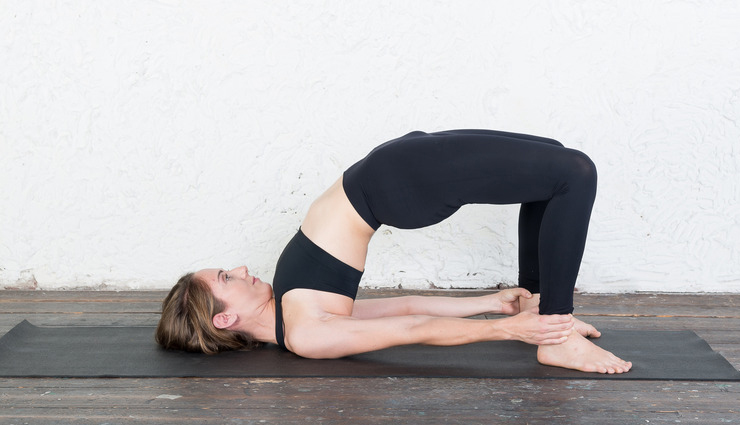
# Setu Bandhasana (Bridge Pose)
Setu Bandhasana strengthens the back, shoulders, and chest muscles while opening the lungs. It promotes better posture and breathing mechanics, increasing oxygen intake and improving lung function.
Steps to Practice Setu Bandhasana (Bridge Pose)
- Begin by lying flat on your back on a yoga mat, with your knees bent and feet flat on the ground hip-width apart. Your arms should be resting alongside your body, with your palms facing down.
- Inhale deeply and engage your core muscles. Press your feet firmly into the ground and lift your hips off the mat, gradually rolling your spine off the floor.
- Slide your shoulder blades down your back and interlace your fingers beneath your pelvis, pressing your forearms into the mat for support.
- Lift your chest toward your chin, maintaining a gentle curve in your neck. Avoid putting excessive strain on your neck or compressing your throat.
- Keep your thighs parallel to each other and your knees directly over your ankles. Maintain a steady breath and relax your face and jaw.
- Hold the pose for 30-60 seconds, breathing deeply and maintaining a relaxed and steady breath.
To release, gently release your hands, slowly lower your spine to the mat one vertebra at a time, and relax in Savasana (Corpse Pose) for a few breaths.
Precautions:
- Avoid practicing Setu Bandhasana if you have any recent or chronic neck or back injuries. If you have concerns, consult a qualified yoga instructor or healthcare professional.
- Modify the pose by using a block or bolster under your sacrum for added support if needed.
Listen to your body and practice within your range of comfort. Do not force or strain yourself into the pose.
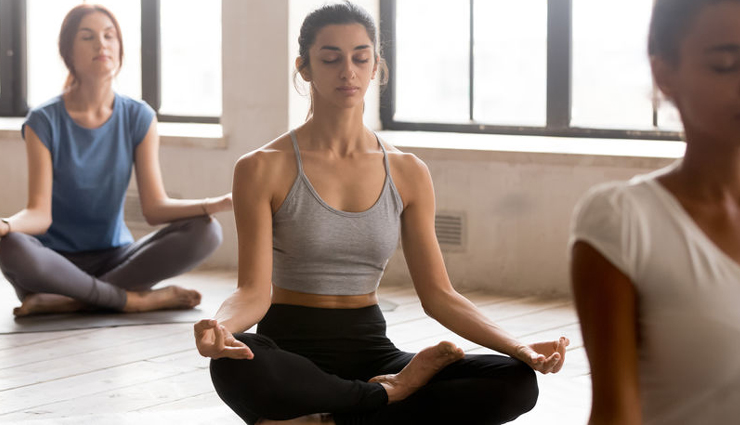
# Kapalabhati Pranayama (Skull-Shining Breath)
Kapalabhati is a dynamic breathing technique that detoxifies the respiratory system, clears the nasal passages, and increases lung capacity. It helps to release stagnant air and purifies the lungs, promoting healthy respiratory function.
Steps to Practice Kapalabhati Pranayama (Skull-Shining Breath)
- Find a comfortable seated position, either cross-legged on a mat or sitting on a chair with your feet flat on the ground.
- Relax your shoulders and place your palms on your knees with your arms relaxed.
- Take a deep inhalation through your nose, filling your lungs with air.
- Exhale forcefully through your nose by contracting your abdominal muscles, allowing the breath to be expelled quickly and forcefully.
- After the forceful exhalation, the inhalation should happen naturally without any effort. Allow the breath to flow in passively.
- Repeat this process for a few rounds, starting with a slow pace and gradually increasing the speed and intensity of the exhalations.
- Maintain a steady rhythm, aiming for around 20-30 exhalations per minute.
- Start with practicing Kapalabhati Pranayama for 1-2 minutes and gradually increase the duration as you become more comfortable with the technique.
- After completing the practice, take a few moments to observe the sensations in your body and return to normal breathing.
Precautions:
- Avoid practicing Kapalabhati Pranayama if you have high blood pressure, heart problems, hernia, epilepsy, or any other medical conditions. It is best to consult a qualified yoga instructor or healthcare professional before attempting this pranayama technique.
- Start with slow and gentle exhalations if you are a beginner, gradually increasing the pace and intensity as you progress.
- Listen to your body and practice with awareness. If you feel any discomfort, dizziness, or strain, reduce the intensity or stop the practice.
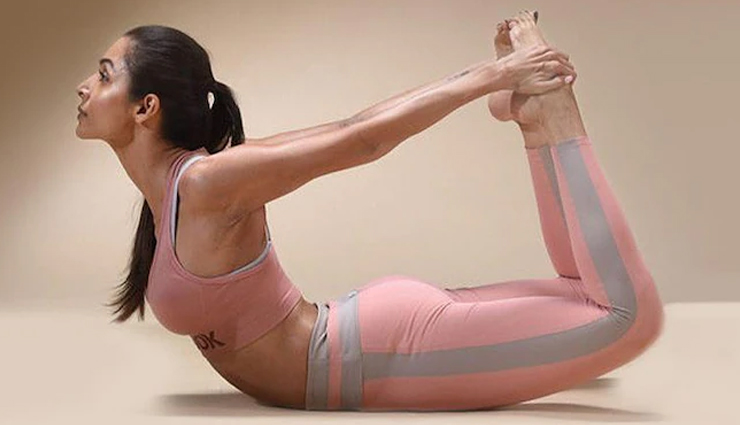
# Dhanurasana (Bow Pose)
Dhanurasana stretches the chest and lungs, increasing lung capacity and improving oxygen intake. It strengthens the back muscles, improves posture, and enhances overall respiratory health.
Steps to Practice Dhanurasana (Bow Pose)
- Lie flat on your stomach with your legs hip-width apart and your arms resting alongside your body.
- Bend your knees and bring your heels close to your buttocks, keeping them hip-width apart.
- Reach back with your hands and grasp your ankles.
- Inhale deeply and lift your chest off the ground, simultaneously lifting your thighs and knees. Feel the stretch in your quadriceps.
- As you continue to lift, kick your legs back into your hands, which will deepen the stretch and lift your torso even higher.
- Keep your gaze forward and maintain a steady breath.
- Hold the pose for 20-30 seconds, or as long as comfortable, while continuing to breathe deeply.
- Exhale and gently release the pose by lowering your legs and chest back to the ground.
- Rest in Child's Pose (Balasana) to relax your back and release any tension.
Precautions:
- Avoid practicing Dhanurasana if you have any recent or chronic back or neck injuries. If you have concerns, consult a qualified yoga instructor or healthcare professional.
- If you have high or low blood pressure, abdominal or hernia issues, or are pregnant, it's best to avoid or modify this pose.
- Listen to your body and practice within your range of comfort. Do not force or strain yourself into the pose.
Disclaimer: It is always advisable to practice yoga under the guidance of a qualified yoga instructor, especially if you have any pre-existing health conditions or concerns related to your respiratory system.





